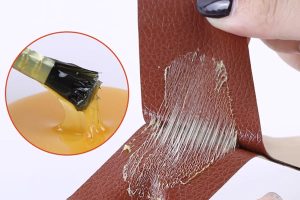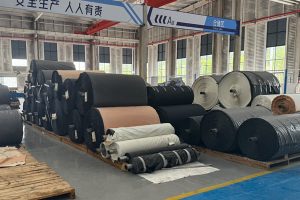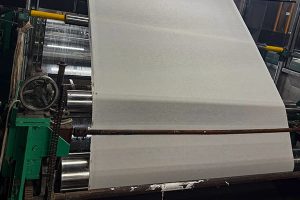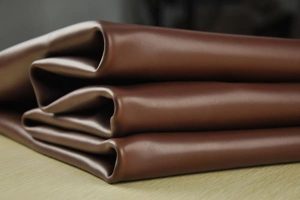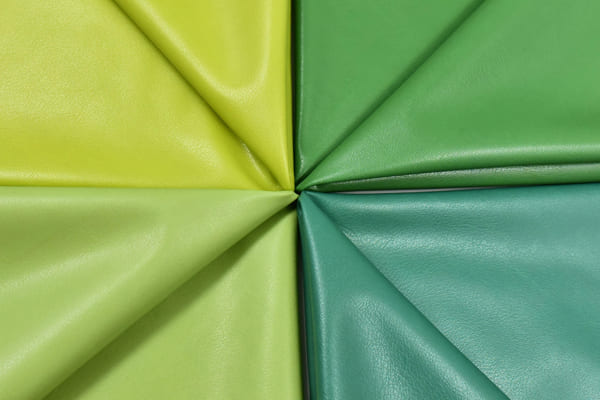
Imagine a material that has journeyed through time, from the hands of ancient hunters to the modern fashionistas strutting down runways today. Leather, with its rich history and undeniable charm, is more than just a fabric; it’s a testament to the artistry of nature and human ingenuity. But is leather truly a natural fabric, or is it merely a byproduct of our lifestyles? As we peel back the layers of this captivating material, we’ll explore its origins, unique characteristics, and the ongoing debate surrounding its sustainability. From the intricate processes that transform raw hides into luxury items to the eco-conscious choices consumers face today, the world of leather is as complex as it is fascinating. So, let’s embark on this journey and discover what makes leather not just a fashion staple, but a remarkable natural fabric with a story to tell!
The Origins of Leather: Nature’s Craftsmanship Unveiled
Leather’s story begins in the animal kingdom, where hides are sourced from a variety of animals, including cows, goats, and sheep. This process is a testament to nature’s craftsmanship, as each hide possesses unique characteristics, such as texture, color, and grain pattern, influenced by the animal’s environment and lifestyle. Historically, leather has been used for thousands of years, dating back to prehistoric times when early humans utilized it for clothing, shelter, and tools. The transformative process from raw hide to leather involves several steps, including curing and tanning, which enhance its durability and flexibility while preserving its natural qualities. As a result, leather stands as a remarkable example of how nature and human ingenuity can combine to create a versatile and enduring material.
Natural vs. Synthetic: Understanding Leather's Place in the Fabric World
In the fabric landscape, leather occupies a unique position as a natural material, contrasting sharply with synthetic alternatives like polyurethane or vinyl. While synthetic leathers can mimic the appearance of genuine leather, they often lack the same breathability, durability, and aging qualities. Genuine leather develops a rich patina over time, telling a story that synthetic materials simply cannot replicate. However, the debate over the environmental impact of leather versus synthetic options is ongoing. Critics argue that animal farming contributes to environmental degradation, while advocates highlight advancements in sustainable leather production methods, such as sourcing hides from ethical farms. Understanding these distinctions helps consumers make informed choices about the materials they support and the values they prioritize in their purchases.
The Leather Lifecycle: From Animal Hide to Fashion Statement
The lifecycle of leather is a fascinating journey that transforms an animal hide into a coveted fashion statement. It begins with the careful selection of high-quality hides, which are then subjected to a complex tanning process. This process can vary widely, from traditional vegetable tanning to modern chrome tanning, each with its unique effects on the leather’s final texture and appearance. Once tanned, leather can be dyed, embossed, or finished in countless ways, enhancing its appeal and functionality. The end products—whether stylish handbags, shoes, or upholstery—represent not only craftsmanship but also an investment in quality. As consumers increasingly seek to understand the origins of their fashion choices, the lifecycle of leather serves as a reminder of the intricate journey from nature to market, emphasizing the value of appreciating and caring for this natural fabric in all its forms.
Eco-Friendly or Not? The Sustainability Debate Surrounding Leather
The sustainability of leather has become a hot topic in recent years, prompting a lively debate among consumers, environmentalists, and the fashion industry. On one side, proponents argue that leather is a natural byproduct of the meat industry, promoting a circular economy where every part of the animal is utilized. They emphasize that well-managed leather production can contribute to sustainable agriculture and land management practices. However, critics point to the environmental impact of cattle farming, including deforestation, methane emissions, and water usage, questioning the overall eco-friendliness of leather. Moreover, the tanning process, which traditionally involves harmful chemicals, raises concerns about pollution and worker safety. In response, many brands are adopting sustainable practices, such as vegetable tanning and sourcing hides from ethical farms. This ongoing debate encourages consumers to consider the broader implications of their choices and the importance of transparency in the leather supply chain.
Leather's Unique Characteristics: What Sets It Apart from Other Fabrics
Leather is celebrated for its distinctive characteristics that set it apart from other fabrics, making it a favored choice for various applications. One of its most notable features is durability; leather is remarkably strong and can withstand significant wear and tear, often lasting for decades with proper care. Additionally, leather is naturally breathable, allowing it to adapt to temperature changes, which enhances comfort—especially in garments and upholstery. The aesthetic appeal of leather is another key factor; it develops a unique patina over time, adding character and richness that synthetic materials simply cannot replicate. Furthermore, leather is inherently water-resistant to some degree, making it a practical choice for bags, shoes, and outerwear. These qualities contribute to leather’s status as a luxury material, often associated with sophistication and style, thus solidifying its place in the fashion and design worlds.
The Role of Tanning: Transforming Hides into Natural Fabric
Tanning is the critical process that transforms raw animal hides into the supple, durable leather we know and love. This intricate procedure serves to preserve the hide, prevent decay, and enhance its aesthetic and functional qualities. There are several tanning methods, each producing distinct results. Traditional vegetable tanning, for example, uses tannins derived from plant materials and is prized for its environmental friendliness and ability to create a rich, deep finish. On the other hand, chrome tanning, which employs chromium salts, offers faster processing times and a softer feel, making it popular for mass production. However, concerns about the environmental impact of chemical runoff have led to a push for more sustainable tanning practices. Innovations such as plant-based and even bioengineered tanning methods are emerging, aiming to reduce the ecological footprint while maintaining the quality leather lovers expect. Understanding the role of tanning not only highlights the craftsmanship involved in leather production but also emphasizes the importance of sustainability in evolving practices within the industry.
Conclusion
As we wrap up our exploration of leather, it’s clear that this timeless fabric is more than just a material; it’s a rich tapestry of history, craftsmanship, and ethical considerations. From its natural origins and unique characteristics to the intricate tanning processes that transform it into the luxurious items we cherish, leather embodies the delicate balance between nature and human innovation. While the sustainability debate continues to spark conversations, advancements in ethical practices and eco-friendly tanning methods offer a promising future for this beloved fabric. As consumers, our choices have the power to shape the industry, encouraging transparency and responsibility. So next time you reach for that leather jacket or handbag, remember the journey it took to get there and consider the impact of your purchase. Leather is not just a fashion statement; it’s a story woven into the very fabric of our lives.


